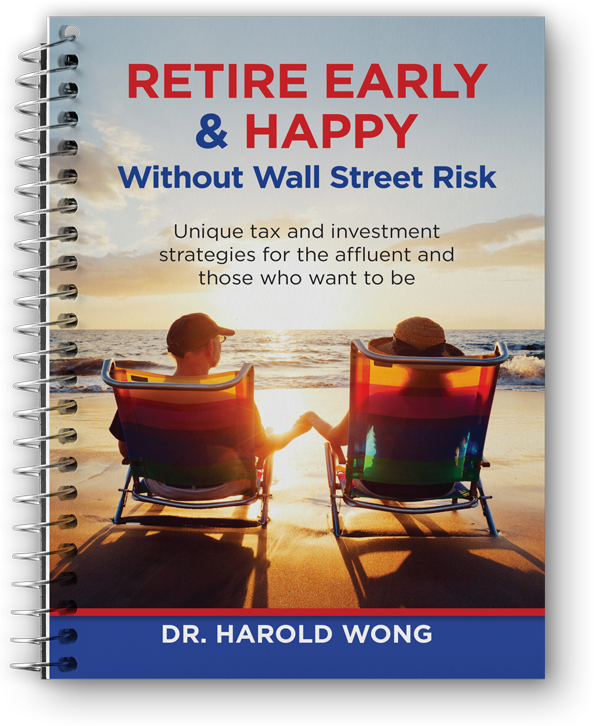

Works Written by Dr. Wong
Solar Business Leasing Yields Big Tax Savings
Ahwatukee Foothills News by Dr. Harold Wong
For decades, when a high-income client complains to his CPA about paying too much income tax, the CPA profession has three standard solutions: Buy a More Expensive House; Contribute the Maximum to your IRA or 401k; and Invest in Rental Real Estate. These solutions simply do not work very well.
The Tax Cuts and Jobs Act, which took effect in January 1, 2018, limits total state and local taxes (including real estate tax) to a maximum $10,000/year deduction on the Schedule A Itemized Deduction Form. In addition, one is limited to deducting the interest on only the first $750,000 balance of a mortgage.
Maximizing contributions to a traditional IRA or 401k simply create a ticking tax bomb:
Example: a 35-year-old engineer deducts $10,000/year for 30 years to a traditional IRA or 401k. He’s in the 25% income tax bracket and saves $2,500/year times 30 years equal to $75,000 total. Riding the stock market roller-coaster, he accumulates $1 million at age 65 and $2 million at age 75. Unfortunately, he and his wife die when a car accident at age 75. Their two kids each receive $1 million distribution from the IRA, which adds to their normal taxable income. If there’s a combined 40% federal and state income tax rate, then $800,000 is paid to the tax authorities, vs. a total of $75,000 income tax saved. Contributions to a traditional IRA or 401k just defer a rapidly growing amount of tax owed. Eventually paying 10 times the tax that you saved is NOT a winning strategy.
Investing in Real Estate: Assume that you buy a starter $500,000 rental house. You can’t depreciate the $100,000 allocated to land and can only depreciate the $400,000 allocated to the building. The 1986 Tax Reform Act specified that residential houses and apartments have a 27.5-year depreciable life. So, $400,000 divided by 27.5 years = $14,545 of depreciation. If one was in a 25% tax bracket, this saves you $3,636 of annual income tax. However, that assumes that the house was “placed into service” on January of year one. If it was “placed into service” in December, one would only get one month worth of depreciation, or $1,212, which would save you $303 of income tax.
Cash Cost to Buy this Rental House: To get a decent interest rate on a rental house, one would have to put at least a 25% down payment, which would be $125,000. There would typically be $7,500 of closing costs. If there was only $7,500 of basic repairs before moving your first tenant in, the total cash required would be $140,000.
Solar Business Leasing: To compare apples to apples, assume that instead of buying a rental house, one invests $140,000 in solar business equipment that is leased to giant food companies. There would be a 30% minimum, or $42,000 solar tax credit. In addition, the depreciable basis is $140,000 less half of the $42,000 solar tax credit = $119,000. Depending on one’s tax situation, in 2024 one could deduct either $76,160 or $119,000. If one was in a 25% income tax bracket, that would save you either $19,040 or $29,750 from the deduction, even if the equipment was “placed into service” in December. When one adds the $42,000 solar tax credit, total tax savings is either $61,040 or $71,750 of federal income tax, not counting any state tax savings. This is either 16.79 or 19.73 times the tax savings of buying a $500,000 rental house.
Conclusion: Solar business equipment leasing is the most powerful way to save taxes in today’s Tax Code! I can show you how to use this lucrative tax saving strategy.
To RSVP for the seminars or schedule a free consultation, please contact Dr. Harold Wong at (480) 706-0177 or
Dr. Wong earned his Ph.D. in Economics at University of California/Berkeley and has appeared on over 400 TV/radio programs.
Office Address
90 South Kyrene Rd
(Says Suite 1 on the front door)
Chandler, Arizona 85226
Click here to schedule a FREE Strategy Session
with Dr. Wong

